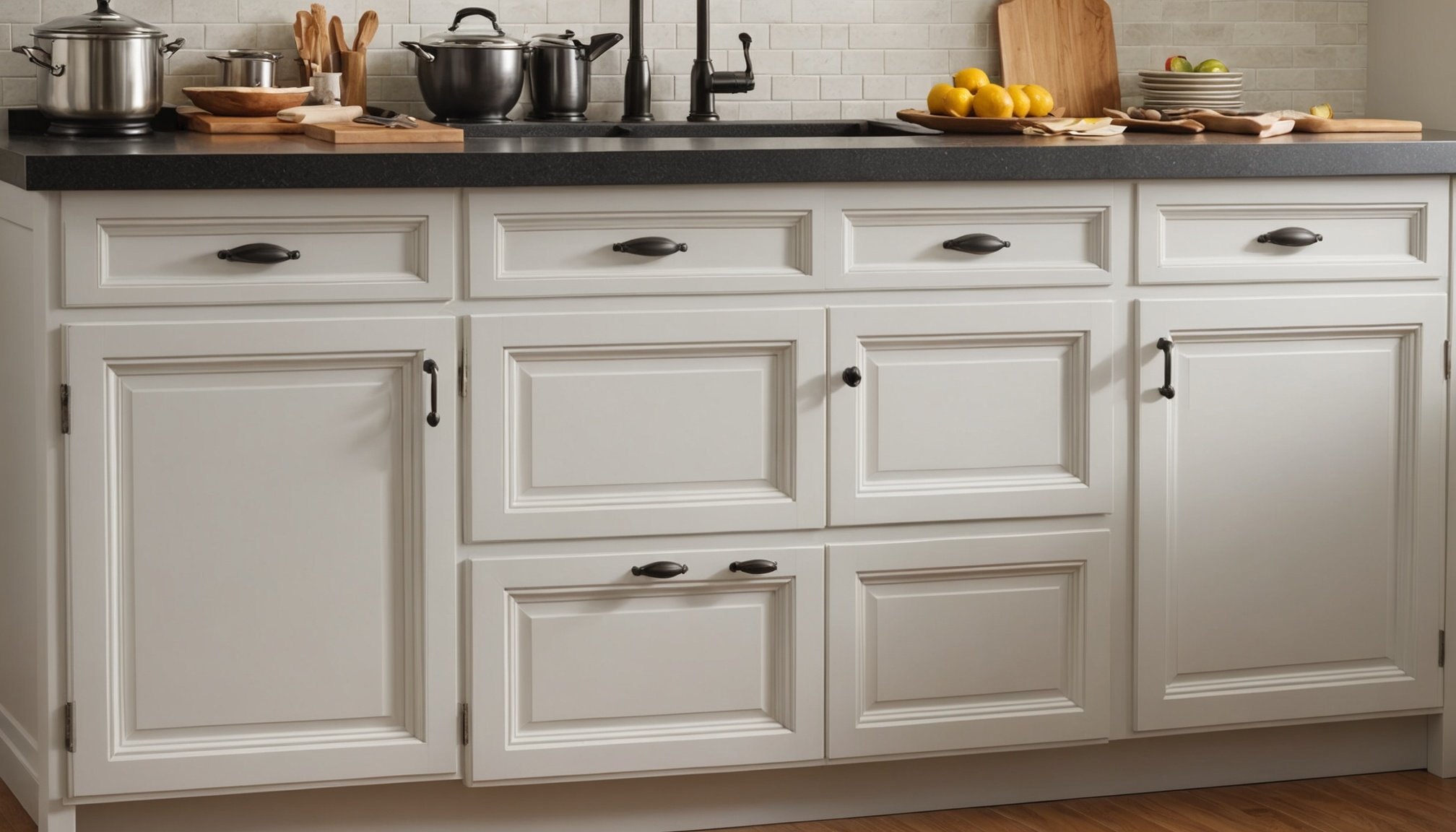Selecting Cabinet Handles for Optimal Hygiene
Choosing the right cabinet handles is crucial for maintaining kitchen hygiene and minimizing cross-contamination. Several materials and designs can help achieve this goal effectively. Stainless steel and brass handles are popular choices due to their antimicrobial properties and ease of cleaning. Touch-free or push-to-open mechanisms further reduce contact, lessening the chances of transferring germs.
When assessing handle designs, consider ergonomics. An easy-to-grip design not only improves user experience but also diminishes surface contact, which is vital for keeping bacteria at bay. For example, D-shaped handles are often preferred for their comfortable grip and accessibility, especially when your hands are full or soiled.
Also to discover : Master Healthy Cooking: Your Ultimate Guide to Calorie Tracking and Portion Mastery
Implement recommended cleaning and maintenance practices to prolong handle hygiene. Regularly disinfect handles with a mild antibacterial solution, focusing on frequently touched areas to prevent the spread of harmful microorganisms. For materials like wood, ensure that the cleaning agents are suitable to avoid damage.
In summary, selecting the appropriate cabinet handles requires consideration of material, ergonomics, and maintenance. Such thoughtful choices support a hygienic environment, reducing cross-contamination risks while enhancing the kitchen’s functional design. By embracing these designs and practices, one can ensure a cleaner and safer kitchen environment.
Also to discover : Revamp Your Kitchen: Cutting-Edge Designs to Curb Midnight Snack Temptations
Strategies to Organize Your Fridge for Healthier Choices
An organised fridge can significantly aid in promoting healthy eating and effective weight management.
Zoning Your Fridge for Efficiency
Creating designated zones within your fridge is an essential strategy. Assign specific areas for different food types – for example, keep dairy together and fruits and vegetables in another section. This compartmentalisation not only ensures easy access but also maintains kitchen hygiene by reducing chances of cross-contamination. Enhance this organization by using visual cues and labelling, which helps in quickly identifying where each item belongs. Prioritise placement of frequently used healthy items, like fresh vegetables or yoghurt, at eye level. This strategic visibility encourages healthier choices and prevents less healthy options from being the default grab.
Implementing FIFO (First In, First Out) Method
Utilising the FIFO method can be highly beneficial in maintaining food freshness. FIFO involves arranging shelves so older items are at the front, ensuring they are used before newer additions. Labelling food items clearly with purchase and expiry dates helps support this method. However, a common pitfall is neglecting to rearrange newer purchases, which might compromise the system’s efficiency. Regularly rearranging shelves can help avoid this issue and uphold food safety.
Utilizing Clear Containers for Visibility
Adopting clear containers can significantly enhance your fridge’s functionality while promoting healthier eating habits. The primary benefit of transparent containers is the ability to easily identify contents without opening them, streamlining the search process and reducing the time you keep the fridge open. This not only aids in maintaining food freshness but also assists in efficient fridge organization.
Selecting the right container type is crucial. Stackable and multi-compartment options help maximize available space and keep similar items together, promoting a neat and orderly environment. For instance, stackable containers allow you to organize various food items vertically, making it easier to retrieve them when needed and ensuring optimal weight management through better portion control.
Clear containers also encourage prepping and portioning in advance. By dedicating time to prepare meals and snacks, you can efficiently organise these items into containers, ready for quick grab-and-go access. This practice not only saves time during busy weeks but actively supports your commitment to healthy eating. In essence, the use of transparent containers is a practical and effective strategy in achieving an organised fridge that fosters better food choices and promotes a more structured kitchen environment.
Actionable Tips for Maintaining Kitchen Hygiene
Keeping a kitchen clean ensures both food safety and a healthy home environment. Developing a routine cleaning schedule is paramount to maintaining hygiene, especially for cabinetry and fridge interiors that can harbour dirt and bacteria. Consider establishing a weekly regimen to dust and disinfect these surfaces using safe cleaning products. Opt for natural solutions like vinegar and baking soda, which are effective without leaving harmful residues.
When focusing on kitchen hygiene, monitoring expiration dates is just as important to avoid foodborne illnesses. Regularly inspect items in your pantry and fridge, discarding anything past its prime. Label newly purchased products with their purchase and expiration dates for easy reference.
Prevent cross-contamination by cleaning utensils, cutting boards, and countertops with an antibacterial cleaner after preparing raw foods. Pay special attention to handles and knobs in your kitchen, as these high-touch areas often collect germs. Implementing strategic cleaning practices and using safe products can greatly reduce contamination risk.
Encourage a culture of cleanliness in shared living spaces by providing clear, accessible instructions for all household members. This ensures that everyone contributes to maintaining a hygienic and inviting kitchen environment, reinforcing the importance of consistent cleaning practices for lasting health benefits.


